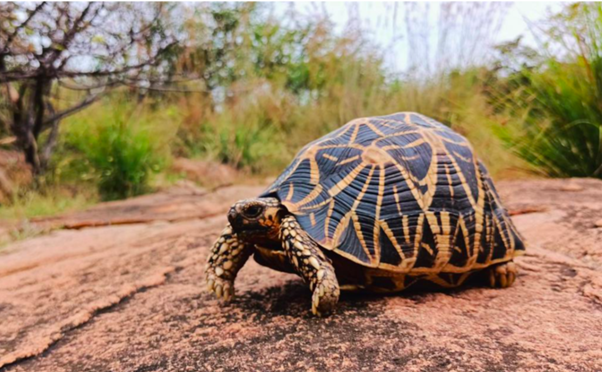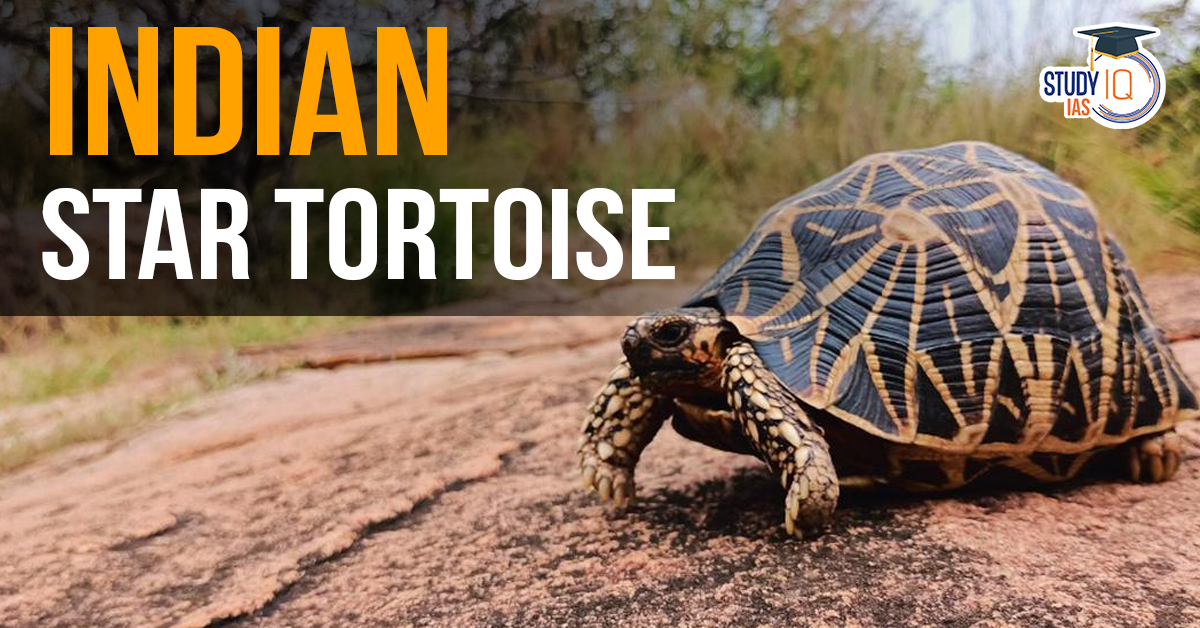Table of Contents
Indian Star Tortoise
The Indian star tortoise (Geochelone elegans) is a small to medium-sized tortoise species native to the dry regions of India, Sri Lanka, and parts of Pakistan. It is named for the star-like patterns on its shell, which provide effective camouflage in its natural habitat. Check here are some key Characteristics about Indian Star Tortoise.
Key Findings of the Study
- It identified 2 genetically distinct groups of Indian star tortoises: Northwestern group: Found in arid regions bordering Pakistan & Southern group: Found in peninsular India.
- Study has also revealed that the northwestern group remains genetically stable, while the southern group has higher genetic diversity.
Characteristics
- It has a medium-sized head, hooked beak and short thick legs covered with tubercles of various sizes and shapes.
- Males have a long tail, while females have short and stubby tails.
- It is a diurnal animal that is mostly active in the morning and late in the afternoon.
- It is a herbivore.

Habitat
- It is Native to India, Pakistan & Sri Lanka.
- They inhabit arid and semi-arid regions, scrub forests, grasslands, and thorny vegetation.
- Their patterns help them blend into the dappled light and shadow of their natural surroundings.
Conservation Status
- IUCN: Vulnerable
- WPA,1972: Schedule I
- CITES: Appendix I
Threats
- Habitat fragmentation due to urbanization and agricultural practices
- Loss of genetic diversity due to hybridization
- Increasing demand as exotic pets:
- 90% of trade occurs in the international pet market, according to the Wildlife Crime Control Bureau
- Shell Pyramiding: Captive-bred tortoises often develop pyramid-shaped shells (due to poor nutrition), affecting mating and reproduction.


 Solar Photovoltaic (PV) Cells, Types, Ke...
Solar Photovoltaic (PV) Cells, Types, Ke...
 Supreme Court Bars Ex-post facto Environ...
Supreme Court Bars Ex-post facto Environ...





















